How Mobile Command Centers Improve Coordination During Natural Disasters
When natural disasters strike, chaos and disruption follow. Traditional communication networks collapse, mobility becomes restricted, and...
8 min read
Craftsmen Industries Nov 6, 2025 1:11:38 AM
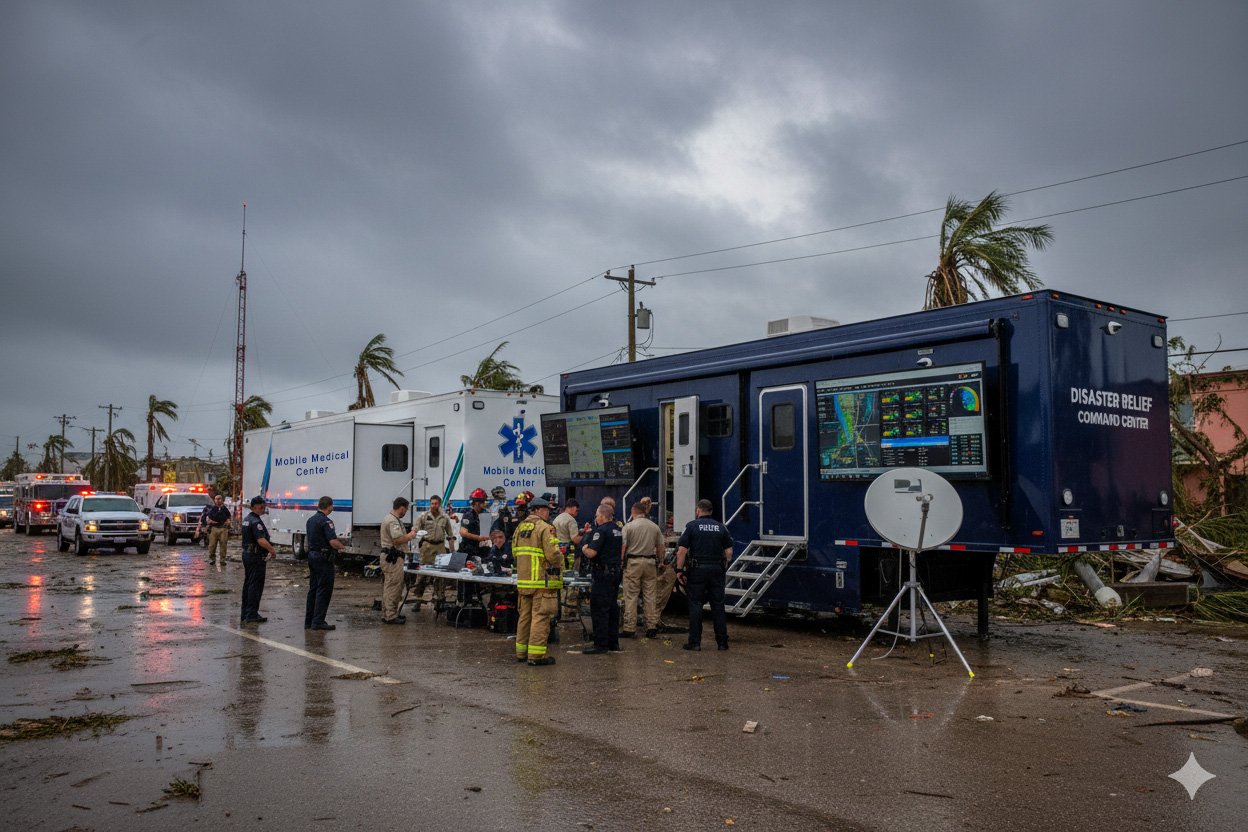
When disaster strikes, speed and coordination can mean the difference between life and death. Responding to hurricanes, floods, or earthquakes requires seamless communication and rapid delivery of medical aid to affected populations. Mobile Medical and Command Units (MMCUs) serve as critical hubs in these situations, providing real-time coordination, communication, and life-saving medical support directly in the field.
Studies show that even small delays in emergency response have serious consequences; a delay of just 30 seconds can increase fatalities by 8% within a day. By combining advanced technology, mobile infrastructure, and on-site medical services, FEMA’s MMCUs enable operations to begin within minutes, dramatically improving survival outcomes.
In this blog, we will explore how MMCUs act as mobile nerve centers in disaster zones, supporting field hospitals, restoring communication networks, and accelerating recovery. Their deployment represents a new era of technology-driven, resilient disaster response and humanitarian aid.
Mobile Medical Units (MMUs) are self-contained, fully equipped healthcare facilities designed to deliver rapid medical intervention directly to disaster-affected areas. When hospitals are damaged or inaccessible due to hurricanes, earthquakes, or wildfires, these units serve as frontline healthcare hubs, bringing essential services directly to those in need. By combining advanced medical equipment with mobility, MMUs ensure that emergency care, triage, surgical procedures, and patient recovery can continue without interruption in challenging environments.
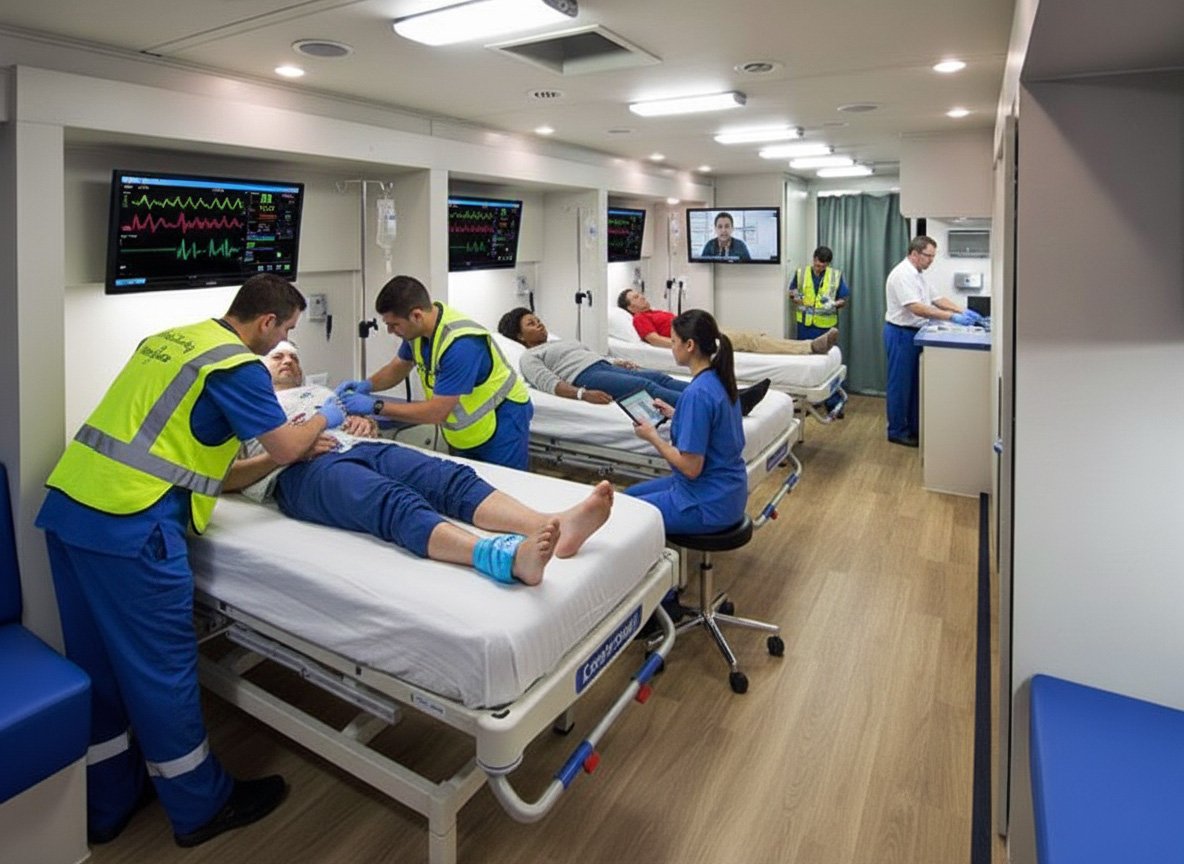
MMUs are equipped to provide a wide range of medical services, including:
Early, on-site medical intervention combined with mobile medical units significantly improves survival rates in disaster-affected populations. A scoping review of mobile health units in natural disasters found that these units play a crucial role in improving access to healthcare for populations with limited access to routine services, thereby enhancing survival outcomes during emergencies
By centralizing medical services on-site, MMUs not only accelerate treatment but also relieve pressure on local hospitals, allowing healthcare systems to manage both disaster-related injuries and routine medical needs. Their integration of diagnostics, pharmaceuticals, and telemedicine ensures a comprehensive and adaptable healthcare response, making them indispensable for modern disaster relief operations.
While MMUs handle direct patient care, Mobile Command Units complement these efforts by providing coordinated command, communication, and operational support, creating a seamless disaster response ecosystem.
While Mobile Medical Units focus on immediate patient care, Mobile Command Units (MCUs) provide the strategic backbone for disaster response operations. These vehicles act as centralized command hubs, enabling coordination, communication, and decision-making across multiple agencies and response teams. By integrating technology, data analytics, and real-time monitoring, MCUs ensure that every relief effort is efficient, timely, and targeted to areas of greatest need.
These features work together to create a centralized, efficient, and resilient operational hub, ensuring that disaster response teams have the tools and connectivity they need to act decisively.
A study by the U.S. Fire Administration found that effective communication and coordination during disasters can reduce response times by up to 30%, highlighting the critical role of MCUs in enhancing operational efficiency.
The National Institute of Standards and Technology's Public Safety Communications Research Division emphasizes the importance of secure and reliable communication systems for first responders, noting that MCUs equipped with advanced technology can significantly improve response coordination and effectiveness.
By providing a single platform for communication, data analysis, and coordination, MCUs help responders anticipate challenges, allocate resources efficiently, and minimize delays, even in areas where traditional infrastructure has failed. Whether deployed to hurricane zones, wildfire regions, or earthquake-affected cities, these units ensure that emergency response is organized, proactive, and data-driven.
With both medical and command capabilities in place, the next critical step in disaster management is restoring communication infrastructure, which Mobile Command Units make possible on the ground.
Disaster response demands both speed and precision. When Mobile Medical Units (MMUs) and Mobile Command Units (MCUs) operate together, they create an integrated system that combines medical care, situational awareness, and operational command, allowing emergency teams to save more lives efficiently.
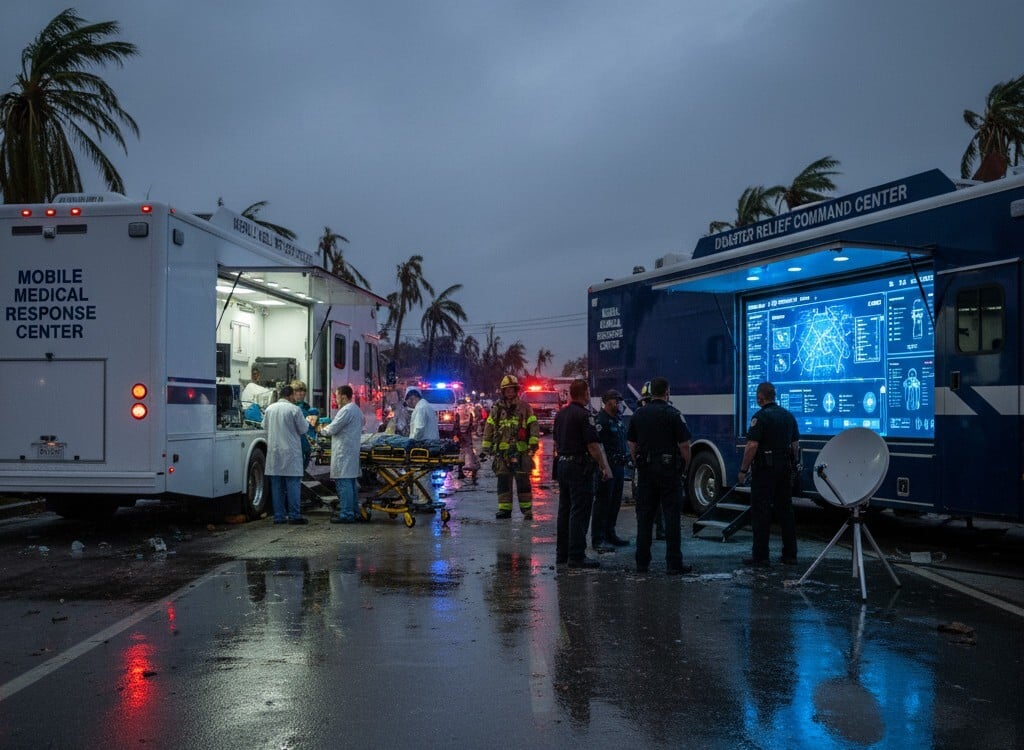
MCUs serve as the intelligence hub of disaster response. They collect real-time data from field teams, drones, satellite feeds, and environmental sensors to:
This data-driven assessment enables MMUs to be deployed strategically rather than reactively, preventing bottlenecks and overlapping coverage. According to FEMA, faster situational assessment can reduce response times by up to 30% in high-risk zones.
Based on live updates from MCUs, MMUs are deployed to affected areas to provide:
A study from Tulane University estimates that each mobile clinic results in an average of 600 fewer emergency room visits annually, reducing hospital strain and generating significant cost savings.
Seamless communication between MMUs and MCUs is crucial for coordinated disaster response. Their secure data-sharing systems allow:
Advanced mobile networks, satellite links, and encrypted communication channels also allow teams to maintain operations even in areas with damaged traditional infrastructure.
MCUs oversee operational logistics while MMUs deliver hands-on medical care. This collaboration ensures:
Integrated operations between MMUs and MCUs also support long-term disaster management, such as monitoring recovery progress, managing patient follow-ups, and reallocating resources as relief efforts scale down.
Once coordination is established, the next focus is on optimizing logistics and resource deployment for sustained relief. This includes mapping supply chains, pre-positioning medical assets, training personnel on mobile unit operations, and incorporating lessons learned from past emergencies.
In modern disaster relief, actionable data is as crucial as manpower. Mobile units equipped with AI, GIS tools, and cloud-based analytics enable agencies to anticipate needs, allocate resources, and track outcomes in real time.
These features empower teams to make faster, smarter decisions during high-pressure disaster scenarios.
By transforming raw field data into actionable strategies, these systems allow teams to adapt instantly to evolving conditions, ensuring both efficiency and safety.
Beyond data intelligence, mobile units also strengthen field logistics and resource deployment, ensuring timely support reaches those who need it most.
Technology serves as the backbone of modern disaster response, enabling mobile medical and command units to operate efficiently under the most challenging conditions. By integrating advanced systems, these units not only maintain continuity but also enhance safety, communication, and operational effectiveness across multiple agencies.
These critical technologies work together to ensure seamless coordination, rapid decision-making, and uninterrupted medical and logistical operations in disaster zones.
Combining these technologies allows mobile units to remain agile and effective even when traditional infrastructure fails. This integration not only strengthens immediate disaster response but also ensures long-term operational resilience, allowing teams to adapt dynamically to evolving challenges and maintain uninterrupted services throughout recovery cycles.
Even with Mobile Medical Units (MMUs) and Mobile Command Units (MCUs) on-site, disaster response can face operational hurdles. Common challenges include:
Redundant satellite links and modular power systems have emerged as key solutions. These innovations help ensure uninterrupted operations and coordinated response:
A 2021 study by the RAND Corporation found that integrating interoperable communication systems among multi-agency disaster teams reduced operational delays by approximately 35% during large-scale emergencies. This clearly demonstrates how strategic adoption of technology significantly enhances response efficiency.
With communication and coordination challenges addressed, the next critical step is optimizing field deployment and logistics to maximize the impact of both medical and command units.
Post-disaster recovery goes beyond immediate relief; it’s about analyzing, learning, and improving future response strategies. Mobile medical and command units play a pivotal role in this process by capturing operational data that informs agencies on effectiveness, resource allocation, and community preparedness.
These capabilities transform raw information into actionable strategies, enabling faster, smarter recovery decisions on the ground.
A study by the National Oceanic and Atmospheric Administration (NOAA) found that agencies using data-driven recovery programs reduced long-term post-disaster costs by approximately 30%, demonstrating how actionable intelligence improves efficiency and resilience.
By sharing this data across federal, state, and local agencies, transparency and accountability remain at the core of every recovery phase, enabling coordinated, measurable, and adaptive relief strategies.
Beyond data intelligence, the evolution of mobile disaster response infrastructure is shaping a future where resilience, efficiency, and sustainability converge.
Disaster response is evolving rapidly, driven by the need for faster, smarter, and more sustainable solutions. Future-ready mobile units are being designed with next-generation capabilities to enhance operational efficiency, safety, and adaptability. Key features include:
According to a 2023 FEMA report, integrating AI and renewable-powered mobile units can reduce response delays by up to 35%, illustrating the tangible benefits of these innovations.
As climate risks intensify, mobile command and medical infrastructure will become the backbone of disaster preparedness. By combining technological innovation with operational flexibility, these units ensure that relief efforts remain proactive, efficient, and capable of saving more lives during every emergency.
Mobile Medical and Command Units are redefining disaster response by integrating advanced technology, data intelligence, and expert personnel into a single, high-impact system. Their coordinated operation ensures faster response times, seamless communication, and more effective recovery efforts, ultimately saving lives and minimizing losses.
Craftsmen Industries designs and delivers mission-ready mobile solutions tailored for first responders, government agencies, and humanitarian organizations. With durable, innovative, and fully equipped mobile units, Craftsmen Industries empowers teams to stay prepared, agile, and effective when every second counts.
Explore Craftsmen Industries today to invest in reliable, cutting-edge mobile command and medical units that transform disaster response into a smarter, safer, and more resilient operation.
An MMU is a self-contained healthcare facility deployed to disaster zones, offering emergency care, triage, diagnostics, and vaccinations. They provide critical treatment when hospitals are inaccessible.
MCUs act as operational hubs, connecting teams via satellite, GIS mapping, and secure networks. They ensure coordination between medical and logistics teams for efficient disaster response.
MCUs guide MMU deployment using real-time data, enabling shared patient information, resource tracking, and coordinated operations for timely care.
Features include advanced communications, telemedicine, GIS mapping, modular medical stations, and on-board power systems, supporting multi-agency emergency operations.
AI and cloud analytics forecast resource needs, track progress, and optimize logistics. NOAA reports data-driven recovery can cut long-term disaster costs by 30%.
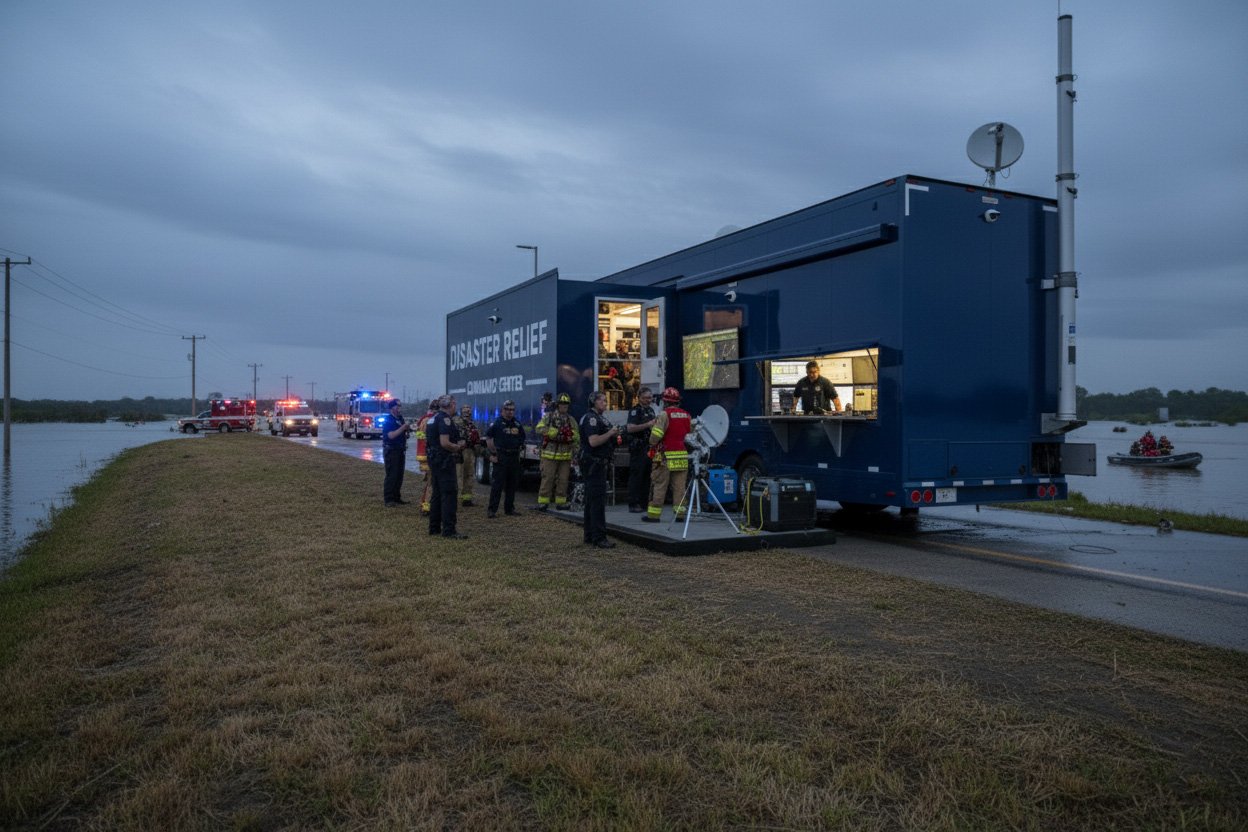
When natural disasters strike, chaos and disruption follow. Traditional communication networks collapse, mobility becomes restricted, and...
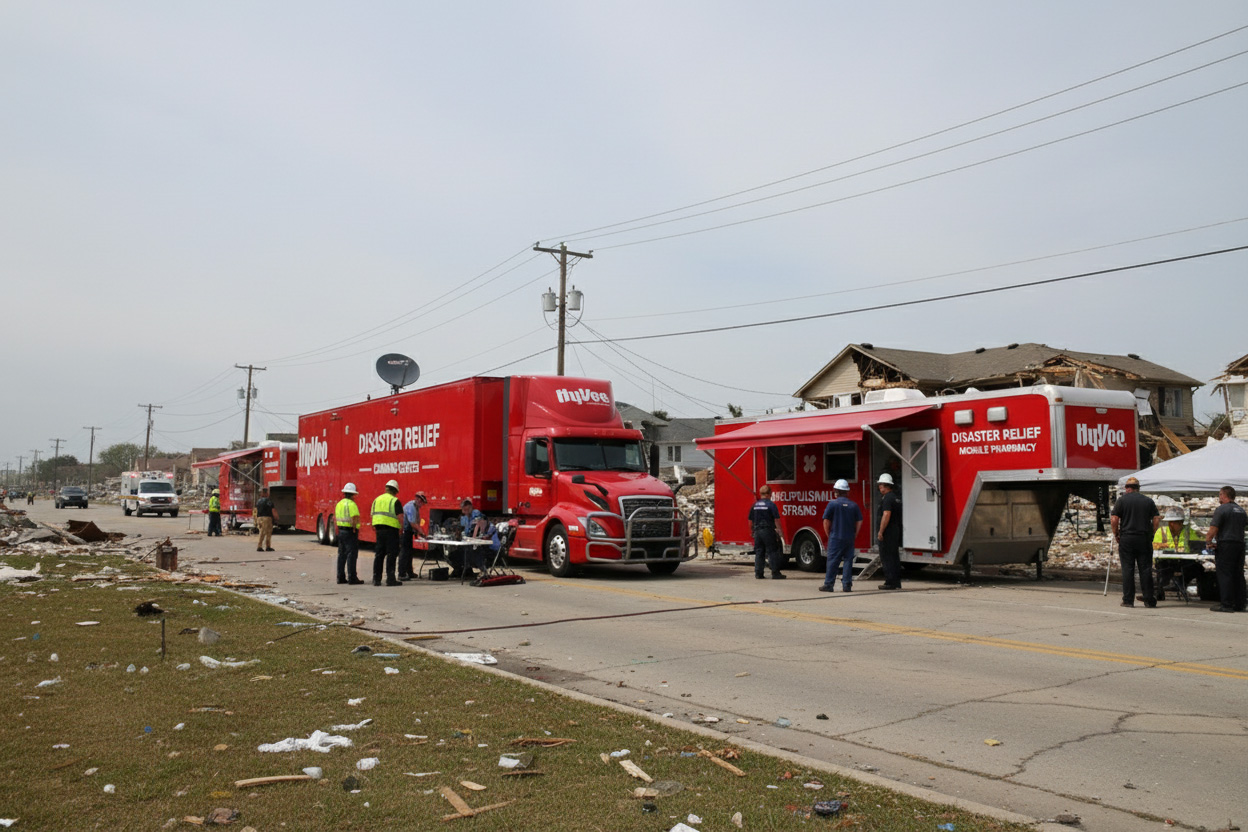
Disaster response vehicles are pivotal in modern emergency management, serving as the backbone for coordination among various agencies during crises....
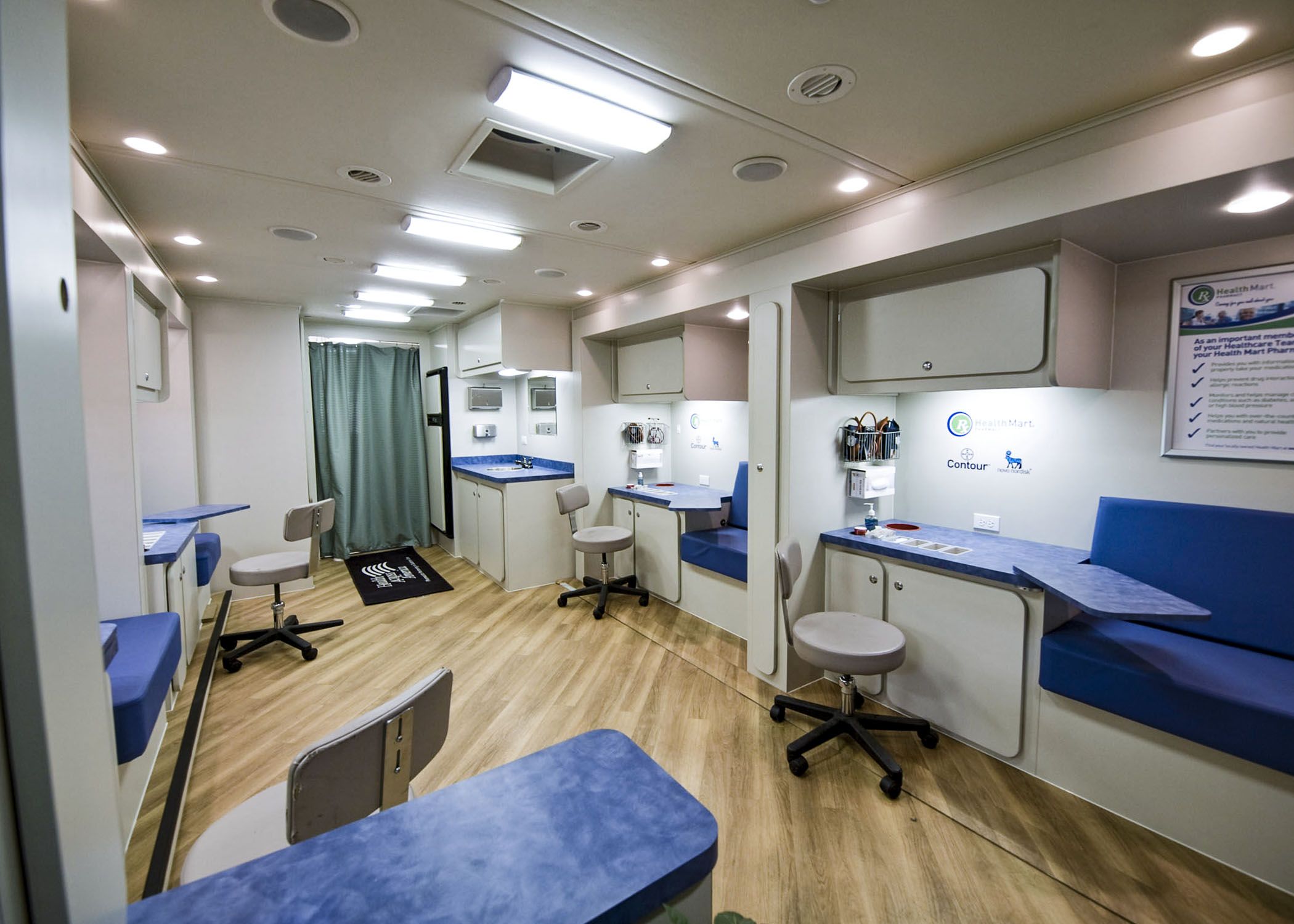
We continue to adapt our operations as outlined in FEMA’s pandemic operational guidance, which helps emergency managers prepare for disaster response...